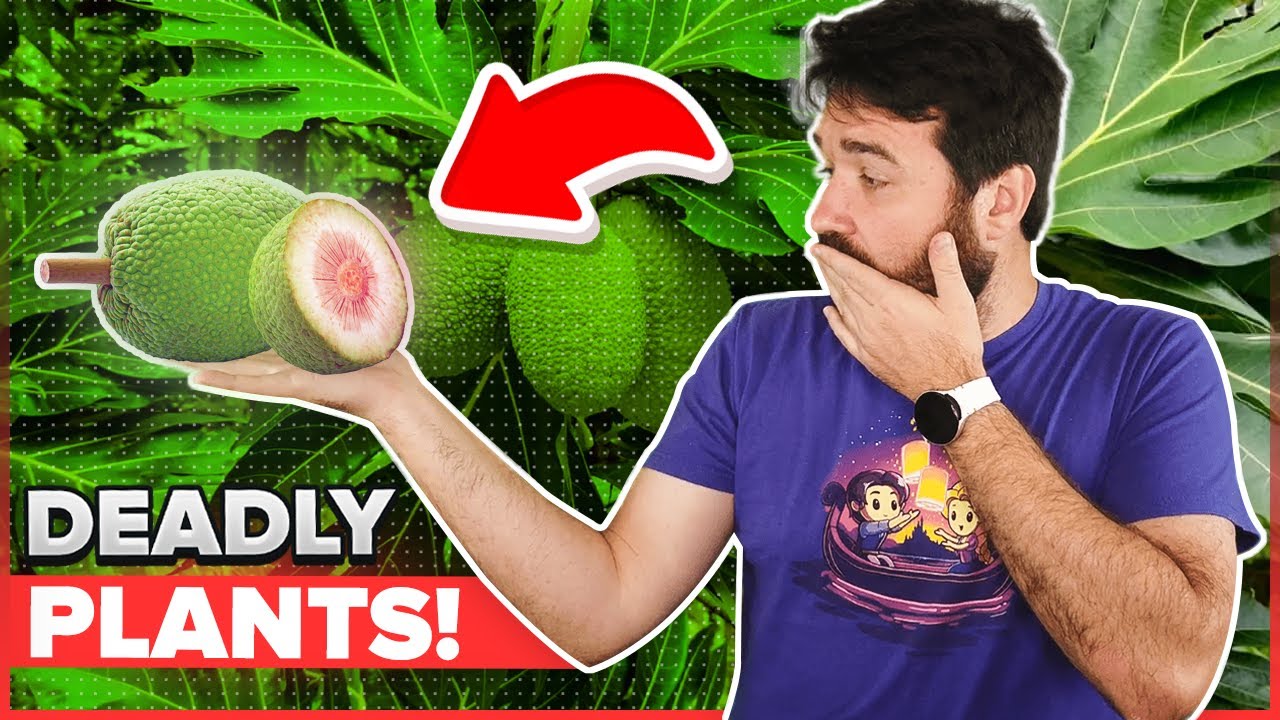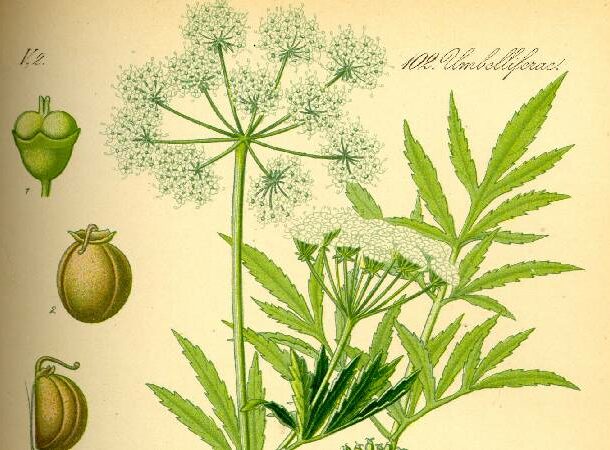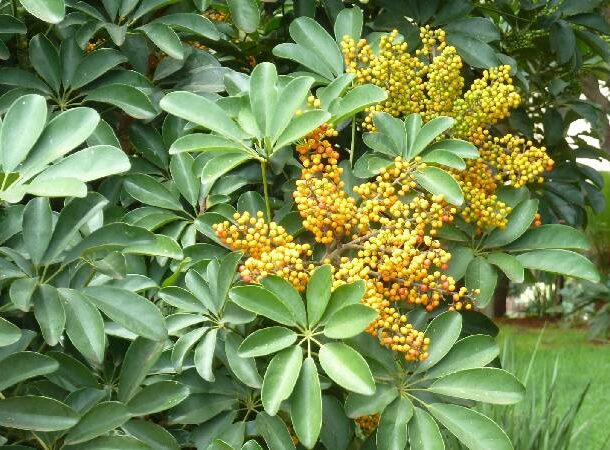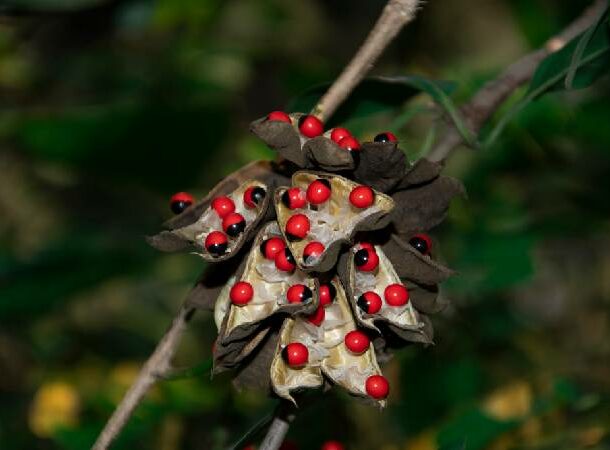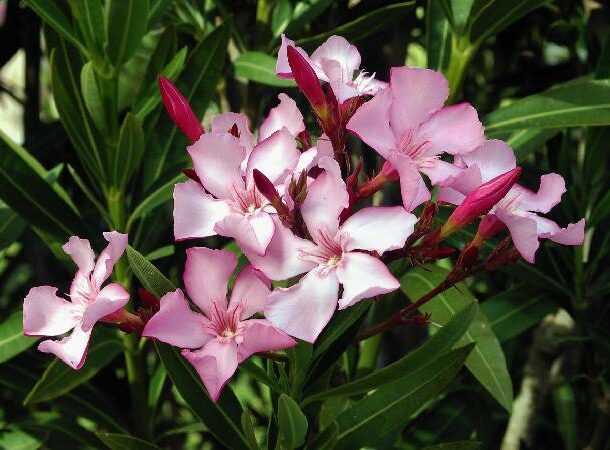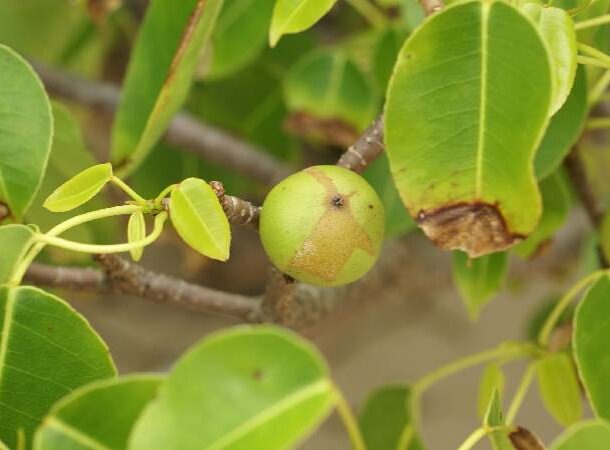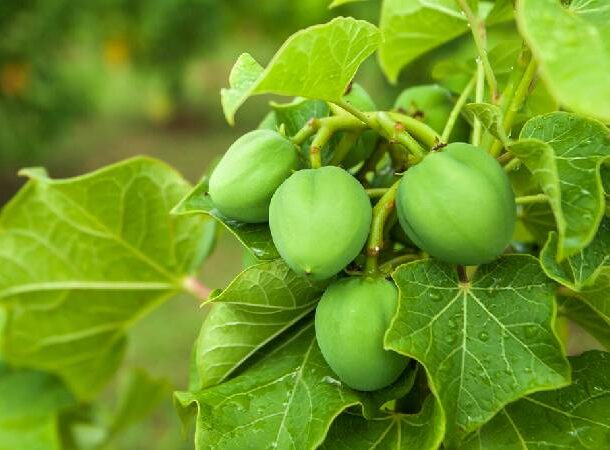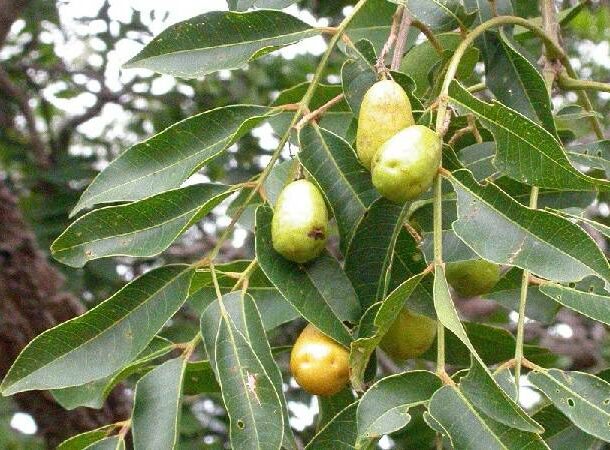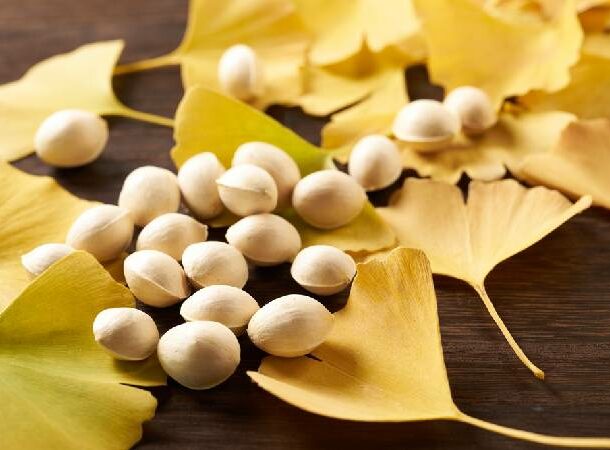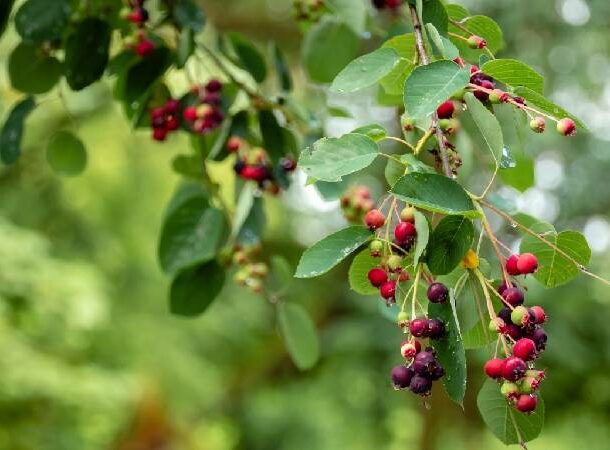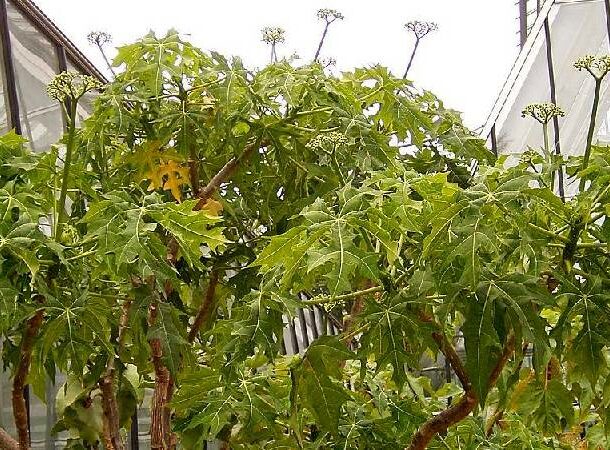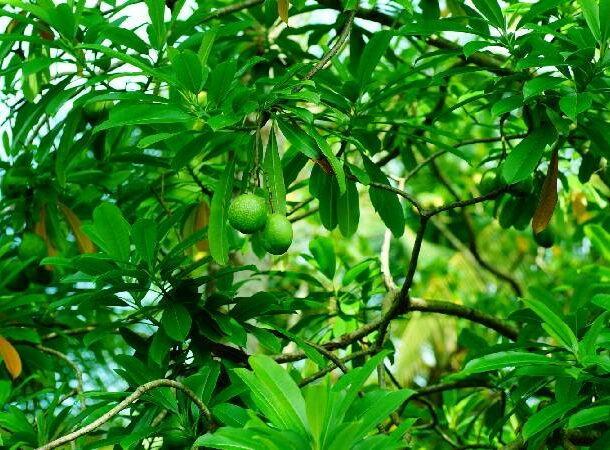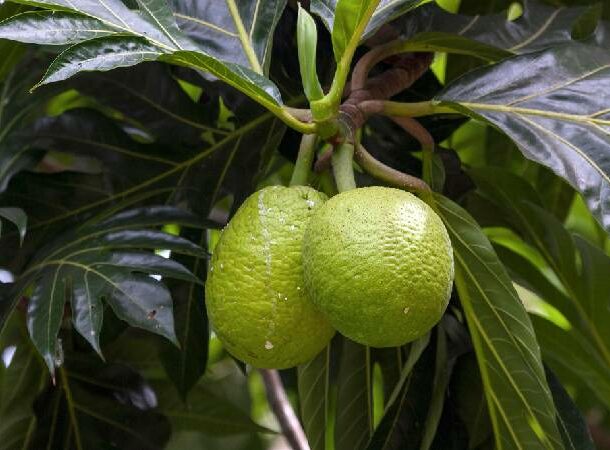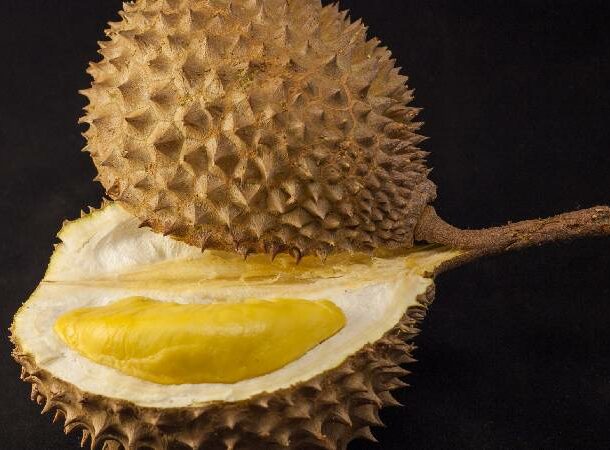Here are 25 examples of potentially deadly fruits you might not know.
But how did this plant get its ominous name? Some say that Native Americans used white snakeroot to treat snakebites, though this is a dangerous myth. White snakeroot is toxic to both humans and animals and should be avoided at all costs. This plant gets its toxic reputation from the cicutoxins found in its roots and leaves. Consuming even a small amount of water hemlock can lead to symptoms such as vomiting, seizures, and death within just a few hours. Yikes! But it’s not just humans that need to be on the lookout for water hemlock. This plant is also dangerous for livestock, who may mistake it for other, safe plants and consume it. If you suspect that you or someone you know (or even a furry friend) may have ingested water hemlock, it’s important to seek medical attention immediately. You see, the seeds of the umbrella tree contain toxins that can cause vomiting and diarrhea if ingested. And while it may be tempting to munch on these seeds (they do resemble small, shiny beads), it’s best to resist the temptation and keep your distance. That’s right – while the fruit of the tomato plant is perfectly safe to eat, the leaves contain toxins that can cause vomiting and diarrhea if ingested. So, while it may be tempting to use the leaves as a garnish or add them to your next salad, it’s best to avoid consuming them. While the nicotine in tobacco products can be highly addictive and harmful to your health, the leaves of the tobacco plant itself are also toxic. Ingesting the raw leaves can cause symptoms such as vomiting, dizziness, and death in large quantities. Strychnine is a potent poison that can cause symptoms such as vomiting, convulsions, and death if ingested. It has been used throughout history as a pesticide and as a means of killing pests and predators. However, it is also highly toxic to humans and animals and should be handled with caution. Despite its deadly reputation, the strychnine tree is also known for its medicinal properties. In traditional medicine, the seeds of the plant have been used to treat a variety of ailments, including snakebites and respiratory problems. However, it is important to use caution when using any plant medicinally, as the wrong dosage or method of preparation can be dangerous. But beware – despite their beauty, the seeds of the rosary pea contain toxins that can cause vomiting, diarrhea, and convulsions if ingested. The seeds are especially dangerous because they are small and easy to swallow, and they can be mistaken for other, safe seeds. All parts of the oleander plant contain toxins that can cause symptoms such as vomiting, diarrhea, and heart problems if ingested. In large quantities, the toxins in oleander can be fatal. The active ingredient in nutmeg, called myristicin, can cause symptoms such as hallucinations, dizziness, and nausea if consumed in large amounts. While a small sprinkle of nutmeg in your pumpkin pie or eggnog is unlikely to cause any harm, consuming large amounts of nutmeg can be dangerous. So, the next time you’re using nutmeg in your cooking, be sure to use it in moderation. A little bit of this warm and flavorful spice can go a long way, and it’s best to avoid consuming large quantities to stay safe. All parts of the manchineel tree contain toxins that can cause symptoms such as blistering, vomiting, and diarrhea if ingested. The sap of the tree is also highly toxic and can cause severe skin irritation and blistering if it comes into contact with the skin. In severe cases, ingesting manchineel can be fatal. All parts of the laburnum tree contain toxins that can cause symptoms such as vomiting, diarrhea, and tremors if ingested. The seeds are especially dangerous, as they can be easily mistaken for other, safe seeds. In severe cases, ingesting laburnum can be fatal. All parts of the jatropha curcas plant contain toxins that can cause symptoms such as vomiting, diarrhea, and tremors if ingested. The seeds are especially dangerous, as they can be easily mistaken for other, safe seeds. In severe cases, ingesting jatropha curcas can be fatal. The seeds and unripe fruit of the hogplum tree contain toxins that can cause symptoms such as vomiting, diarrhea, and tremors if ingested. In severe cases, consuming hogplum can be fatal. But beware – despite their delicious flavor, ginkgo nuts can be toxic if consumed in large quantities. The seeds contain toxins that can cause symptoms such as vomiting, diarrhea, and tremors if ingested. In severe cases, consuming ginkgo nuts can be fatal. All parts of the four o’clock plant contain toxins that can cause symptoms such as vomiting, diarrhea, and tremors if ingested. The seeds are especially dangerous, as they can be easily mistaken for other, safe seeds. In severe cases, ingesting four o’clock can be fatal. But beware – while elderberries are safe to eat when cooked, the raw berries and other parts of the elderberry plant, such as the leaves and stems, contain toxins that can cause symptoms such as nausea, vomiting, and diarrhea if ingested. In rare cases, consuming raw elderberries can also cause a severe allergic reaction. All parts of the Chinese lantern plant contain toxins that can cause symptoms such as vomiting, diarrhea, and tremors if ingested. The seeds are especially dangerous, as they can be easily mistaken for other, safe seeds. In severe cases, ingesting Chinese lantern can be fatal. All parts of the chaya plant contain toxins that can cause symptoms such as vomiting, diarrhea, and tremors if ingested. The toxins in chaya are especially dangerous because they are not destroyed by cooking or boiling, and must be carefully removed before the plant is safe to eat. All parts of the cerbera odollam plant contain toxins that can cause symptoms such as vomiting, diarrhea, and tremors if ingested. In large quantities, the toxins in cerbera odollam can be fatal. But did you know that cashew nut shells are poisonous if ingested? The oil that is found in the shells contains toxins that can cause symptoms such as vomiting, diarrhea, and tremors if ingested. In severe cases, consuming cashew nut shells can be fatal. But did you know that apple seeds are poisonous if ingested in large quantities? Apple seeds contain a small amount of a toxic compound called amygdalin, which can release cyanide when it comes into contact with digestive enzymes. In large quantities, cyanide can be fatal. But beware – while akee is safe to eat when it is fully ripe and cooked, the unripe fruit and seeds of the akee plant contain toxins that can cause symptoms such as vomiting, diarrhea, and tremors if ingested. In severe cases, consuming unripe akee can be fatal. While African breadfruit is safe to eat when it is fully ripe and cooked, the unripe fruit and seeds of the African breadfruit tree contain toxins that can cause symptoms such as vomiting, diarrhea, and tremors if ingested. In severe cases, consuming unripe African breadfruit can be fatal. The leaves and stem of the gympie-gympie plant contain toxins that can cause severe pain and skin irritation if touched. In severe cases, contact with gympie-gympie can be fatal. Durian is safe to eat when it is fully ripe, but the unripe fruit and seeds of the durian tree contain toxins that can cause symptoms such as vomiting, diarrhea, and tremors if ingested. In severe cases, consuming unripe durian can be fatal.
